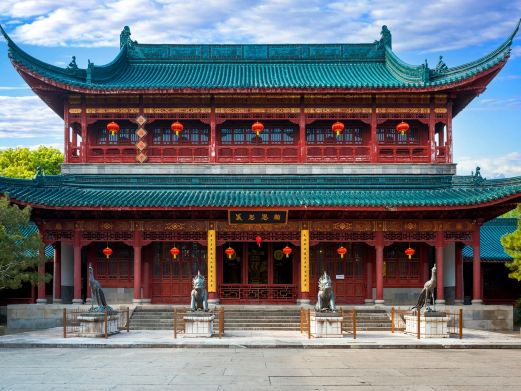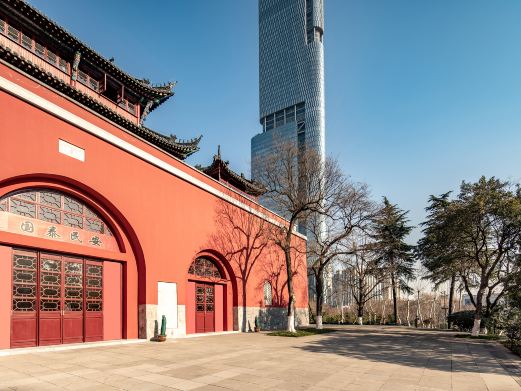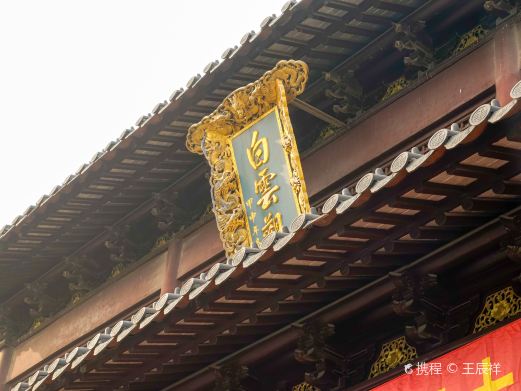Tiandu Peak is located on the southeast side of Huangshan Scenic Area. It faces Lianhua Peak on the west and is adjacent to Boyu Peak on the east. Together with Guangmingding and Lianhua Peak, they are known as the three main peaks of Huangshan. With an altitude of 1810 meters. Tiandu Peak is famous for its steepness. Standing on the peak, you can overlook the magnificent panorama of Huangshan. Therefore, there is a saying that ‘not climbing Tiandu Peak is like coming in vain’. The name of Tiandu Peak comes from the ancient name ‘the place where immortals gather’, meaning a celestial city. The whole peak pierces directly into the sky. The average slope is about 70 degrees, and in some local areas, it reaches nearly 80 degrees, which is close to vertical. The Crucian Carp’s Back on the peak is only 1 meter wide, with sheer cliffs on both sides. It can be said to be the most perilous wonder of Huangshan. There is a stone carving of ‘reaching the acme’ on the top of Tiandu Peak. In the middle of the peak, there is a natural stone chamber that can accommodate a hundred people. Outside, there is a stone that looks like a drunkard reclining obliquely, named ‘Immortal Guarding the Cave Entrance’. Standing on the peak, you can overlook the continuous clouds and mountains, the rivers like a thread, and connect with the sea in the distance. On a fine day, you can also see the sea of clouds. If you have enough time, you can also watch the sunrise and sunset according to your schedule. In addition, from the waist of Tiandu Peak to the top, you can also see scenic spots such as Hundred-Step Ladder, Squirrel Jumping to Tiandu Peak, Celestial Jade Screen, Boy Worshiping Guanyin, and Two Monks Worshiping Buddha. The whole peak is divided into the south slope and the north slope. On the north slope is the old path. From the old mountain pass to the top of Tiandu Peak is about 2 kilometers. It usually takes about an hour to walk up. The south slope is the new path. From the top of Tiandu Peak to the new mountain pass is about 2.5 kilometers. It usually takes about one and a half hours to walk. Both the new and old mountain passes can be used for going up and down the mountain. The old mountain pass is located next to the Welcoming Pine in Yuping Tower. You can also take the Yuping Cableway from Ciguangge Station to Yuping Station and then go to the old mountain pass to climb the mountain. If you don’t take the cableway at Ciguangge Station, you can also walk to Banshan Temple and then go to the new mountain pass to climb the mountain. However, the hiking distance is relatively long and may take 2 hours. Therefore, it is recommended to take the cableway. Similarly, if you directly reach the top from the old mountain pass, it is also recommended to return by the same route, take the cableway down the mountain from Yuping Station to Ciguangge Station. Because if you walk from the top of Tiandu Peak to Ciguangge Station, it may take more than four hours in total. It is extremely tiring, and the scenery on this section is far less wonderful than when going up from the old mountain pass.
Opening hours: Open all year round from 07:00 to 15:00. The specific business status is subject to the opening situation on the day. Must-see tips: 1. Tiandu Peak is high and perilous. The steps are high and the cliffs are steep. Visiting requires a relatively high level of physical strength. People with heart disease, high blood pressure, the elderly, and young children are not recommended to visit. 2. Wear comfortable clothes and shoes. You can bring your own dry food and water up the mountain. 3. There is more rain in the first half of the year. Before setting off to climb the mountain, prepare rain gear according to the weather conditions. It is recommended to carry a raincoat with you. The mountain is high and the wind is strong. Umbrellas are not recommended.Prepare a reasonable amount of mountaineering first aid supplies to prevent unexpected situations; it is advisable to bring flashlights, gloves, hiking poles, and maps.
During the tour, pay attention to safety. There are stone railings and iron locks on the mountain paths to ensure the safety of tourists. Additionally, it is crucial to follow the principle of ‘walk without looking at the scenery, and look at the scenery without walking.’








